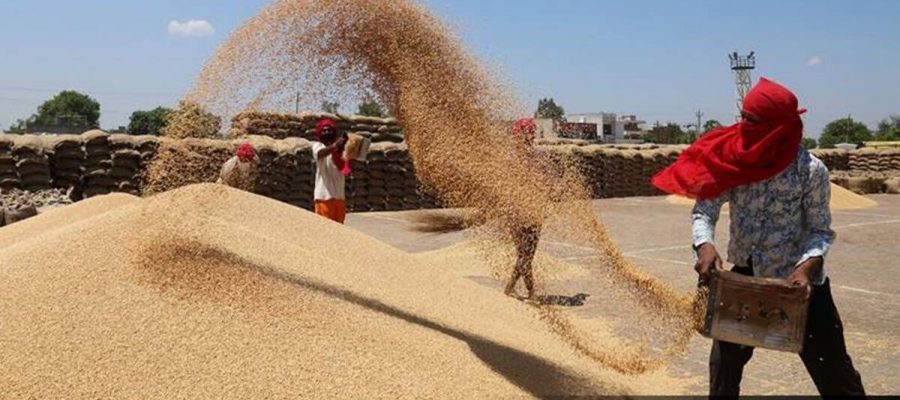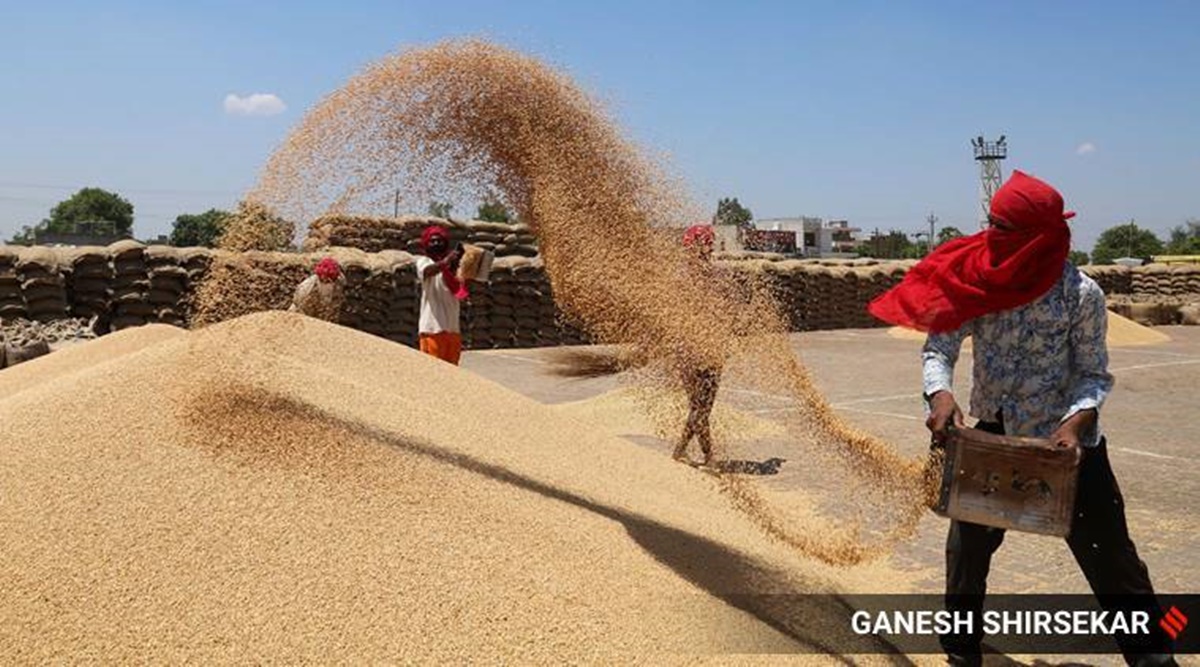At the projected economic cost of Rs 29.94/kg for wheat and Rs 42.94/kg for rice, the corresponding per-kg PDS consumer subsidy in the coming fiscal would work out to Rs 27.94 and Rs 39.94, respectively.
The Food Corporation of India’s (FCI) “economic cost” of wheat sold through the public distribution system (PDS) is budgeted to go up to Rs 29.94 per kg and that of rice to Rs 42.94 per kg in 2021-22, from their corresponding current levels of Rs 27.40 and Rs 39.99 per kg.
These numbers are significant, given that under the National Food Security Act (NFSA) of 2013, 81.35 crore persons, accounting for over 67% of the country’s population, are entitled to receive 5 kg of PDS wheat or rice per month at Rs 2 and Rs 3 per kg, respectively.
Also, the political pressure from the farmer protests may force stepped-up procurement by the government.
At the projected economic cost of Rs 29.94/kg for wheat and Rs 42.94/kg for rice, the corresponding per-kg PDS consumer subsidy in the coming fiscal would work out to Rs 27.94 and Rs 39.94, respectively.
The economic cost is what the FCI incurs in procuring, transporting, storing and distributing every kg of wheat or rice.
The estimated Rs 29.94/kg economic cost for wheat in 2021-22 includes a “pooled cost” of Rs 19.21 (roughly what the farmer gets); “procurement incidentals” of Rs 3.20 (gunny bags, market fee, arhtiya commission, labour and other mandi-level expenses); and “distribution cost” of Rs 7.53 (freight, handling, storage, interest and other administrative charges).
In the case of the Rs 42.94/kg for rice, the pooled cost is Rs 27.90, with procurement incidentals at Rs 4.85 and distribution cost at Rs 10.19.
Under NFSA, enacted during the previous United Progressive Alliance regime, the Rs 2-3/kg PDS issue prices for wheat and rice were valid for up to three years from the date of commencement of the law on July 5, 2013.
The Narendra Modi government has not raised these rates even as the Finance Ministry’s latest Economic Survey has pointed to the need to consider a revision in the Central issue prices of PDS grain “to reduce the bulging food subsidy bill”.
Meanwhile, rice and wheat stocks in the Central pool remain at way above necessary levels, despite the Modi government implementing special schemes for alleviating the widespread economic distress resulting from the Covid-19-induced lockdown.
As against 65.91 million tonnes (mt) of grain offtake from public godowns in 2018-19 and 62.19 mt in 2019-20, the Modi government has allocated a total quantity of 94.37 mt in the current fiscal.
That includes 57.15 mt under NFSA (at Rs 2-3/kg), 4.31 mt under other welfare schemes (at higher rates of Rs 4.15/kg for wheat and Rs 5.65/kg for rice) and 32.91 mt under the Pradhan Mantri Garib Kalyan Anna Yojana.
The latter scheme involved providing an extra 5 kg grain per month, free of cost, to NFSA beneficiaries (for eight months from April-November 2020) and 8 crore returning migrant labourers (for two months from May-June).
But notwithstanding these extraordinary liquidation measures, total grain stock in the Central pool stood at 82.18 mt as on February 1, compared to 75.17 mt a year ago (see table).
The 82.18 mt included 31.83 mt of wheat, 24.36 mt of rice and 38.79 mt of un-milled paddy (whose milled rice equivalent, at 67 per cent, was 25.99 mt).
Source: Read Full Article


